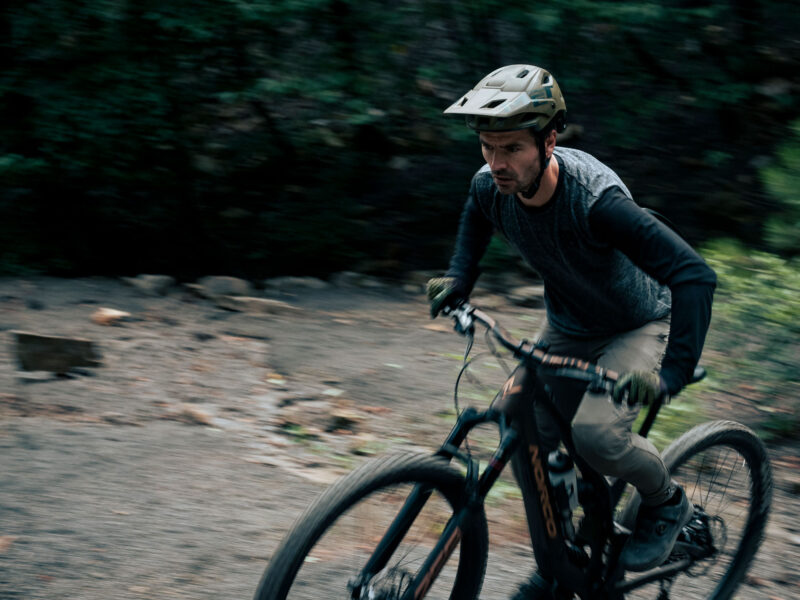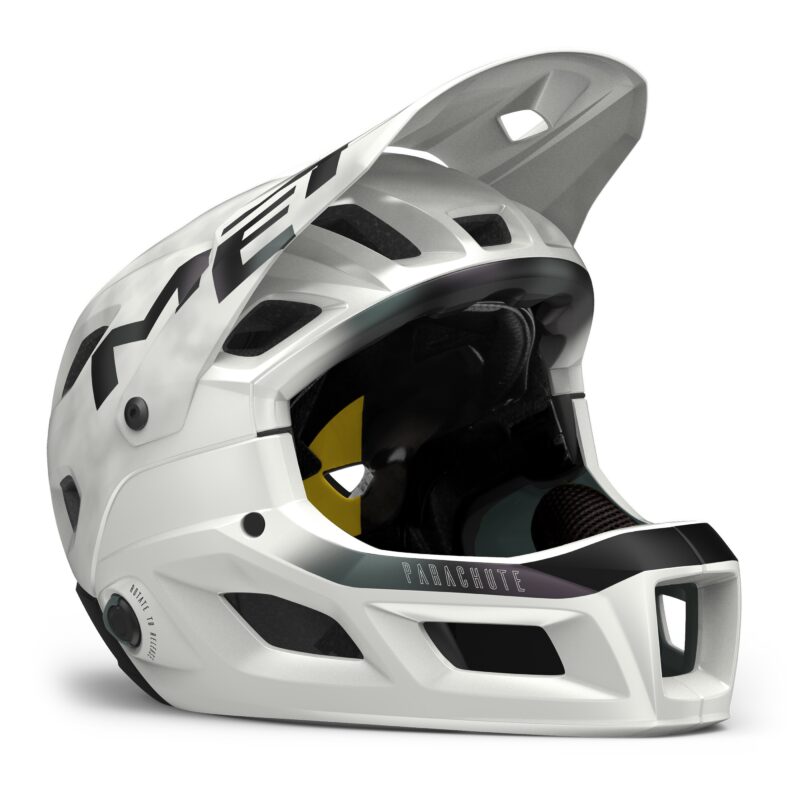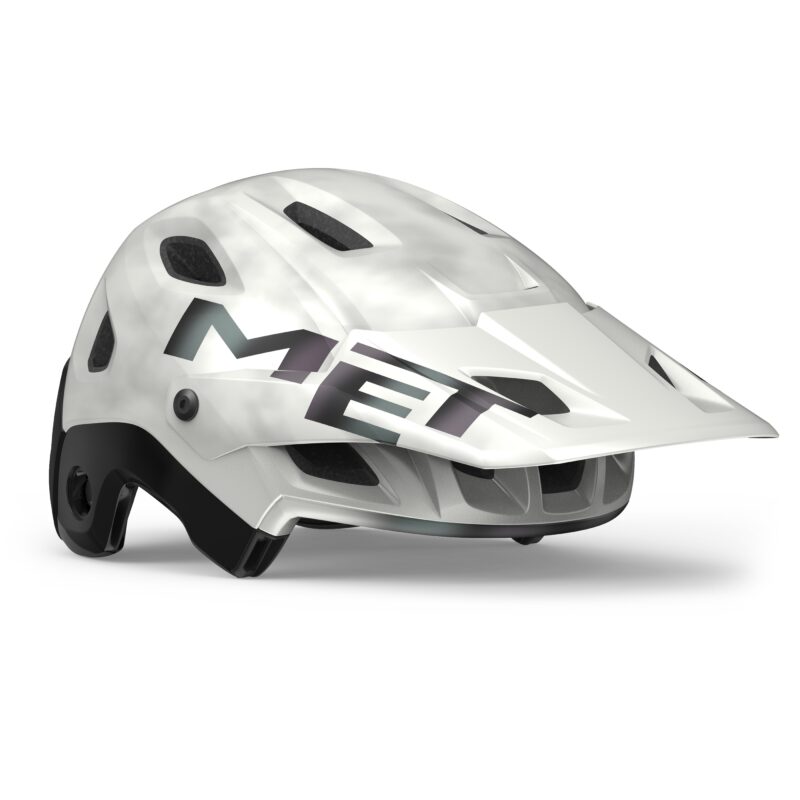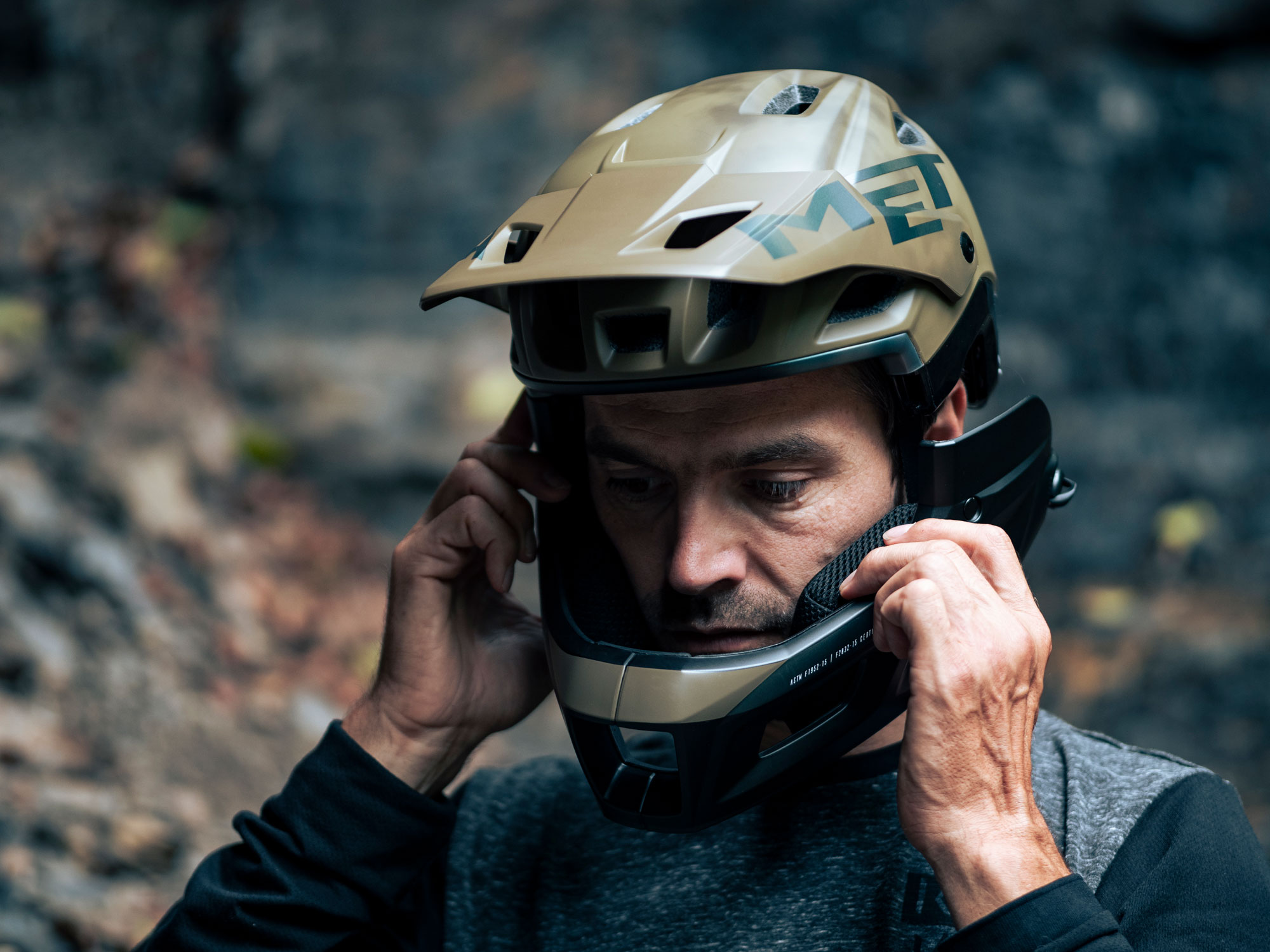Every rider comes to a point in their trail, enduro, or downhill journey when they begin to seriously consider protecting their face, rather than just the top, back, and sides of their head.

Sometimes it takes getting whipped in the face by a stick or rock, or kissing the ground on a drop or jump for a rider to wish they had a chin bar to keep their money-maker out of trouble.
Many brands have gone to market with helmets that cater to these folks. And nearly anyone who has ever been in the market for a full-face helmet has had to decide between models that convert to a half-shell design, or traditional helmets that don’t.
Each has its benefits and drawbacks. Deciding which one is right for you usually comes down to a rider’s ability, style, and personal preferences.

So, how does one decide?
The folks at MET have been in the business of helmets for more than 30 years. They have a helmet for everyone ranging from fast XC types, to downhill thrill seekers. Two of their helmets, the convertible MET Parachute MCR, and the Bluegrass Vanguard Core, perfectly illustrate each helmet’s intended use, and for whom they are designed.
Why choose a convertible full-face helmet?
Unless you’re a world tour rider, you probably don’t spend most of your time doing the same type of riding. Mountain bikers frequently engage in widely varying types of riding, including cross country, enduro, downhill, and even commuting, often on the same bike.

Each of these ride styles generally calls for a different type of helmet for maximum comfort and protection. However, helmets can be pricey, so a lot of people opt for versatile options that can do it all.
This is where modular or convertible helmets like the MET Parachute MCR shine.
Since it is convertible, the Parachute MCR, which stands for Magnetic Chin Bar Release, functions as two helmets in one. In its full-face mode, it provides extra protection for the face when riders expect to encounter gnarlier terrain. That peace of mind goes a long way to helping riders push themselves.
That same added protection, however, can feel like overkill during more mellow rides, especially commutes. Rather than having to stick with a bulky, full-face option, modular helmets like the Parachute MCR allow riders to remove the chin bar and make the helmet into a half-shell, which makes more sense for casual rides.

The beauty of the Parachute MCR and similar helmets is that they still offer protection for riders in either mode. The Parachute MCR is ASTM-certified for the shell and Chinbar. This certification is not mandatory, but essential, as it’s the ONLY cert that tests the Chinbar, which guarantees the safety of the product for an Enduro style riding.
People who sporadically visit a bike park, but spend most of their time on tamer trails, get the benefit of a lightweight and cooler open-face design, with the option for increased full-face protection when they want it, or vice versa.
It also comes equipped with an adjustable two-position visor, which is common across most mountain bike trail or enduro helmets and gives riders more options to fight sun and trail debris.
The Parachute MCR has an MSRP of about $375.
Why choose a traditional enduro full-face helmet?
Traditional full-face helmets can be an ideal selection for those who spend most of their time racing in enduro or downhill arenas.

While convertible helmets still offer great protection, many unconvertible full-face helmets have added protection and extra features tailored to aggressive riding styles. For example, the Bluegrass Vanguard Core helmet, like the Parachute MCR, comes with an ASTM certification. But it’s also NTA certified, which means it can handle a higher impact velocity and has more impact tested coverage around the two most sensitive brain areas (the back and the temples).
If you’d like to learn more about helmet testing, we did a deep dive last year covering MET’s process.

It also cuts weight compared to the Parachute MCR and increases ventilation to keep riders cooler. So, for those who spend most of their time with a chin bar, the Bluegrass Core is beefier but lighter.
Additional features of the Bluegrass Core helmet not included in the Parachute MCR include:
- Fixed visor with safety release
- Reduced weight
- C-shaped cheek pads to maximize ventilation
- Removable mud grill
The Vanguard Core costs roughly $355.
Key similarities and important differences
Like many traditional and convertible full-face helmets, the Met Parachute MCR and Bluegrass Core have numerous similarities. These include ASTM certification, flexible visors that can absorb impact, a fit system with a 360-degree belt and micrometric and vertical adjustment, MIPS C2 technology, and in-mold construction.

The key difference in the helmets is their intended use. Enduro full-face helmets offer the best protection, DH-like coverage, ventilation, and low weight for long days of racing. They have racing-inspired features (safety release visors, mud grill, etc.) that make them ideal for the job.
Meanwhile, convertible helmets lean toward versatility. They are made to offer the protection of an enduro full face when needed, but are less concerned with being lightweight and offer less coverage than an enduro full face helmet. Their features are aimed toward adventure and are perfect for riders that enjoy a variety of terrains and crave a two-in-one option.
Helmets are the most important piece of equipment riders have, and they are not cheap. Before purchasing a full-face helmet, riders should think about the type of riding they do, then spend money accordingly.
Regardless, it’s important to choose a full face helmet that’s ASTM-certified (Chinbar and shell) to maximize your safety.
This post is sponsored by MET. Learn more about MET helmet at met-helmets.com/en/.
